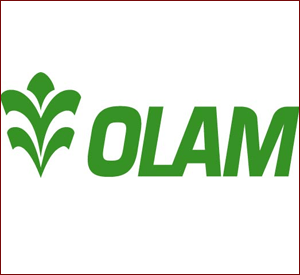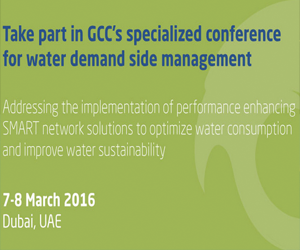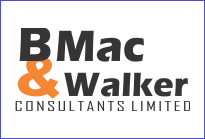Casablanca: Marrakech Biennale – The convergence point of art in Africa
2016/03/20

The event, first held in 2005, has this year drawn artists from the Arab world, the Mediterranean and sub-Saharan Africa.
Under the theme “Not New Now”, lead curator Reem Fadda is hoping to explore the concepts of time, matter, immateriality and advancement in the context of modern and contemporary art, according to the event website.
The ruins of the 16th century Palais Badi is host to some spectacular art works. Algerian artist Rachid Koraïchi has dedicated his installation “Prayer for those Absent” – which consists of vases resting on rectangular bases in a pool – to his parents.
“I wanted to tell the story of our amazing relationship through these words on the pieces that remain. After my life they will be here for my children and grandchildren. The story is also etched in an accompanying work. I am an artist thanks to my parents. They never stood in my way, they never blocked me, on the contrary they encouraged me to do it,” the artist said.
Belgian artist Eric Van Hove has a rather interesting project on display.
It is a massive mock-up of a caterpillar bulldozer engine made from leather, bone, wood, plasterwork, recycled steel and copper.
“This Caterpillar engine has interested me for a while now because it’s a civilian engine, made for construction, but it’s been used in warfare, in war zones since the Vietnam war,” he said.
“In Iraq and all the wars until now it’s been used. And the piece in the Biennale, more specifically the D9T, is one type of Caterpillar engine that is used in the West Bank and in Gaza,” Van Hove said about his exhibit.
Moroccan artist and designer, Sara Ouahaddou has a rather interesting set up. Showcasing colourful jewelry pieces made mostly from steel, Ouahaddou said she was inspired by Berber jewellery which has been documented by prolific film maker, photographer and writer, Ahmed Bouanani.
She explained that Bouanani had documented drawings are designs of “an amazing jeweller. I re-worked his jewellery designs. I rediscovered his technique, his materials and modified them. To have a basis and a link, I also used his folktales as the basis for an imaginative interpretation.”
Eye-popping works of three pioneering artists who brought a new aesthetic to Morocco in the 1960s are also on display. Farid Belkahia, Mohammed Melehi and Mohamed Chabaa’s work make a vivid impression.
Moroccan artist Yto Barrada said: “Young people (are) working with traditional crafts, re-using them, re-learning them. I’m learning how to sew and weave since I left Morocco. And also the place of craft in the history of civil movements, civil rights movements, or in feminist movements or in gay rights has always been very important – you know, all these considered low-arts – the crafts.”
There is a variety of works on display. Some which provoke questions – and others that leave you spellbound.
An art collective has paid tribute to French-Moroccan photographer and journalist, Leila Alaoui who was killed in a terrorist attack in Ouagadougou earlier this year. They used recycled waste to create a huge lit tent bearing a photo of Alaoui and adorned by plastics.
The Biennale seeks to build bridges between cultures through art and Marrakech is the perfect place to do so.
The event runs until May 8, 2016.
- Related Articles
-
French manufacturers in Morocco Factories in the sun
2016/06/21 CONSIDERING the help provided to large foreign manufacturers in Morocco over the completed few years, it would have taken a critical effort by them to fail. Renault, a French carmaker, for example, is thriving: of 2.8m cars it made globally last year, one in ten trundled out from its two shiny assembly plants in Tangier and Casablanca. It hopes from presently on to make 400,000 cars a year. -
REITs to drive commercial real estate growth in Morocco
2016/06/11 The roll out of new investment vehicles is helping stoke growth in Morocco’s commercial real estate sector. Last year Morocco passed legislation allowing for the creation of real estate investment trusts (REITs). Under the law, REITs are required to invest at least 60% of their assets in real estate, while the remainder can be invested in other assets to help diversify their investment portfolio. In early 2016 the European Bank for Reconstruction and Development (EBRD) joined forces with Moroccan retail distributor Label Vie Group by investing in its retail real estate subsidiary Vecteur LV (VLV). The aim of both the EBRD and Label Vie is to launch the country’s inaugural REIT and attract more investment in Morocco’s real estate sector. -
Routes Africa forum aims to improve African air connectivity
2016/05/15 An event dedicated to the development of the African aviation industry will take place next month in Tenerife (26-28 June) to encourage the launch of new air services to, from and within the African continent. Routes Africa 2016 will help to improve African connectivity by bringing together airlines, airports and tourism authorities to discuss next air services. Around 250 route development professionals are expected to attend the forum which was founded ten years ago to stimulate increase in the industry. -
While Europe is on the verge of breaking up, Africa is reaping the benefits of integrating, growing and developing its trading blocks
2016/05/13 The collapse of virtual borders is one of the majority remarkable things to have happened in our lifetimes. In the world of cyberspace, time and distance have become almost peripheral considerations at the same time as it comes to doing business. Services from software development to accounting can be delivered across the world in the blink of an eye. Next business leaders will struggle to imagine an era at the same time as communication was neither immediate nor virtually free. -
Africa’s economic growth is likely to be slower in the intervening years
2016/05/12 Africa’s economic increase is likely to be slower in the intervening years than in the before decade, according to the new rating by Ernst & Young using a barometer to gauge the level of appeal and success.“The baseline projection of the International Monetary Fund (IMF) for 2016 is presently reduced to 3%, while it was estimated at 6.1% in April 2015″, Ernst & Young points out in its rating.
-
- Casablanca News
-
- CASABLANCA: Factories in the sun European firms bring carmaking and an aerospace industry to north Africa
- CASABLANCA: REITs to drive commercial real estate growth in Morocco
- BOTSWANA: Routes Africa forum aims to improve African air connectivity
- BOTSWANA: Economic integration is helping boost trade and investment in Africa
- BOTSWANA: Africa’s economic growth is likely to be slower in the intervening years
- CASABLANCA: King Mohammed VI of Morocco begins an official visit to China
- Trending Articles
-
- SOUTH AFRICA: South Africa to extend ICT reach
- AZERBAIJAN: Azerbaijan to become export gateway for Indonesian products to European market
- INDIA: Indian central bank chief to step down in surprise move
- ABIDJAN: Cote d’Ivoire to re-emerge as a tourism destination
- SERBIA: China’s Xi sees Serbia as milestone on new ‘Silk Road’
- AFRICA: More than 41 million in southern Africa face food insecurity




.gif?1356023993)





